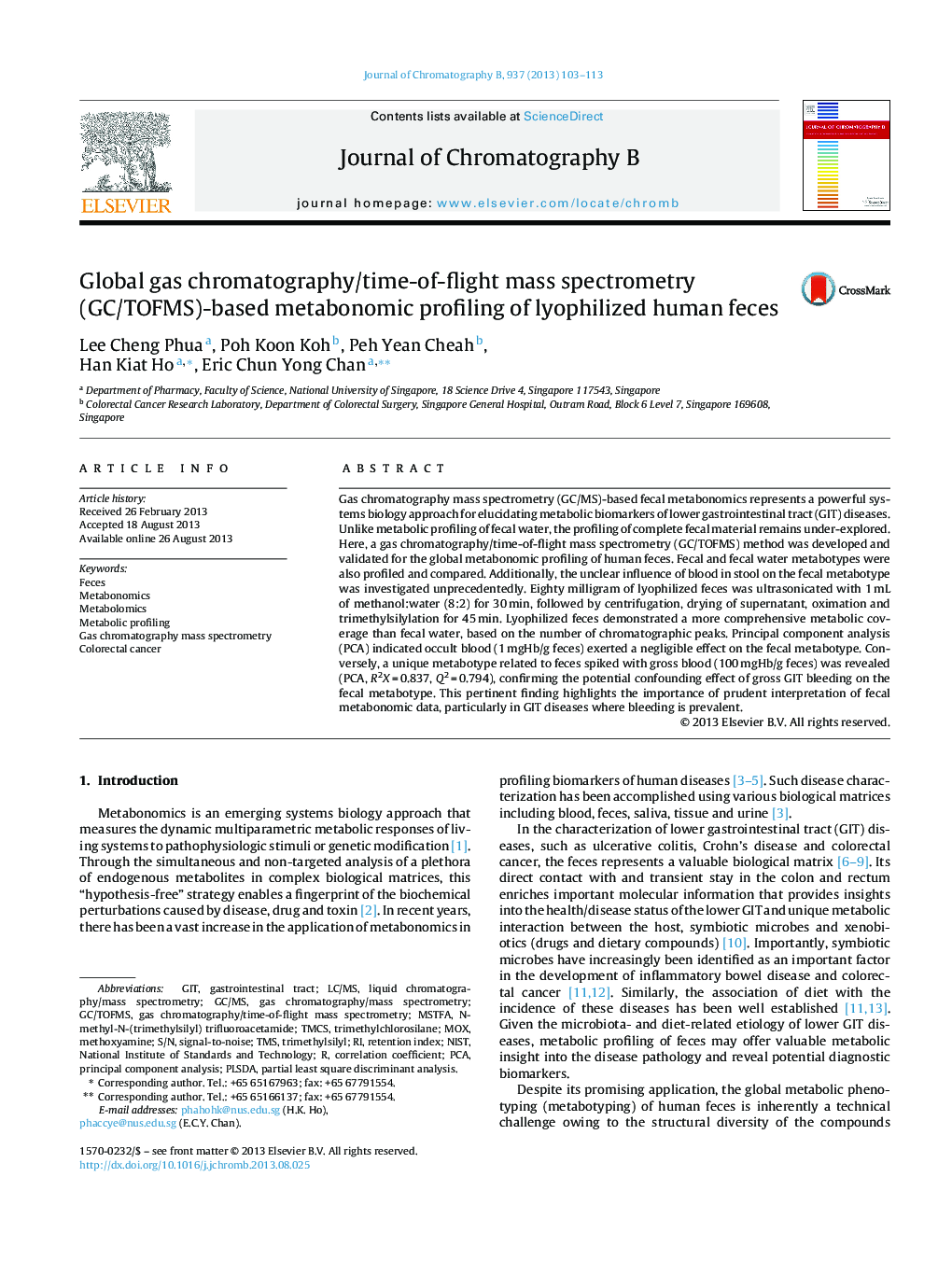| Article ID | Journal | Published Year | Pages | File Type |
|---|---|---|---|---|
| 1216477 | Journal of Chromatography B | 2013 | 11 Pages |
•A GC/TOFMS method was developed and validated for the metabotyping of human feces.•Feces demonstrated a more comprehensive metabolic coverage than fecal water.•Occult blood in stool exerted a negligible effect on the fecal metabotype.
Gas chromatography mass spectrometry (GC/MS)-based fecal metabonomics represents a powerful systems biology approach for elucidating metabolic biomarkers of lower gastrointestinal tract (GIT) diseases. Unlike metabolic profiling of fecal water, the profiling of complete fecal material remains under-explored. Here, a gas chromatography/time-of-flight mass spectrometry (GC/TOFMS) method was developed and validated for the global metabonomic profiling of human feces. Fecal and fecal water metabotypes were also profiled and compared. Additionally, the unclear influence of blood in stool on the fecal metabotype was investigated unprecedentedly. Eighty milligram of lyophilized feces was ultrasonicated with 1 mL of methanol:water (8:2) for 30 min, followed by centrifugation, drying of supernatant, oximation and trimethylsilylation for 45 min. Lyophilized feces demonstrated a more comprehensive metabolic coverage than fecal water, based on the number of chromatographic peaks. Principal component analysis (PCA) indicated occult blood (1 mgHb/g feces) exerted a negligible effect on the fecal metabotype. Conversely, a unique metabotype related to feces spiked with gross blood (100 mgHb/g feces) was revealed (PCA, R2X = 0.837, Q2 = 0.794), confirming the potential confounding effect of gross GIT bleeding on the fecal metabotype. This pertinent finding highlights the importance of prudent interpretation of fecal metabonomic data, particularly in GIT diseases where bleeding is prevalent.
